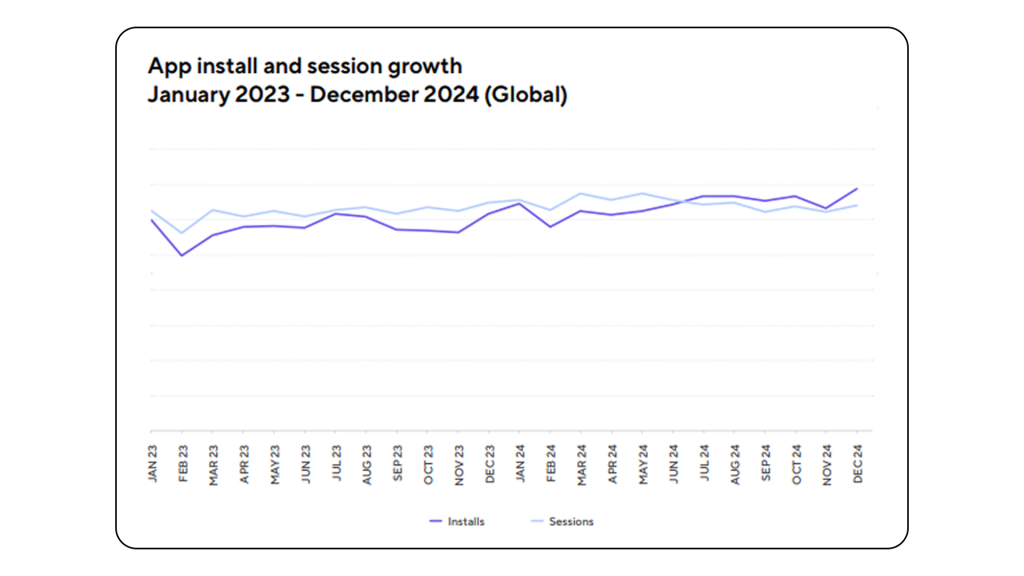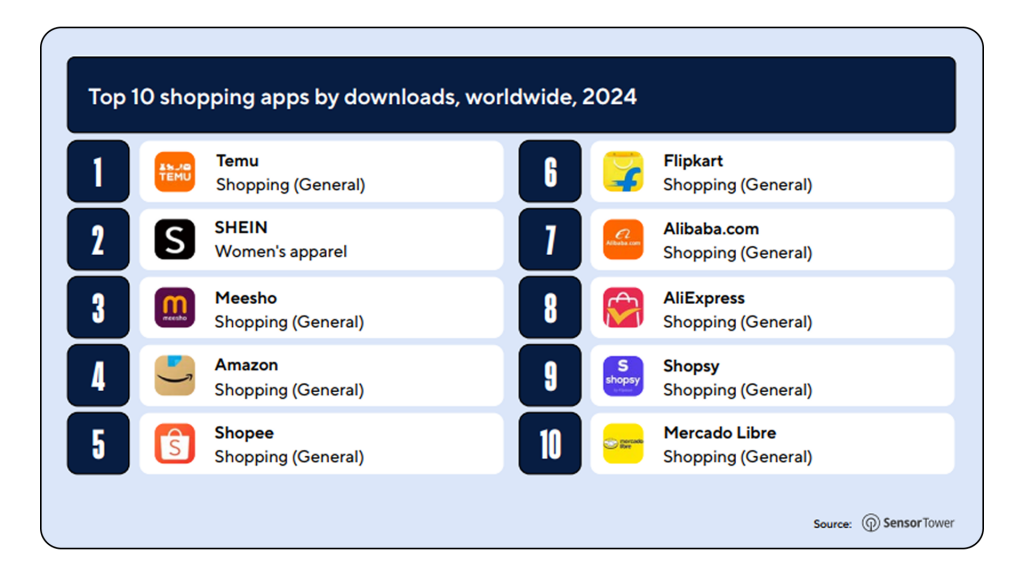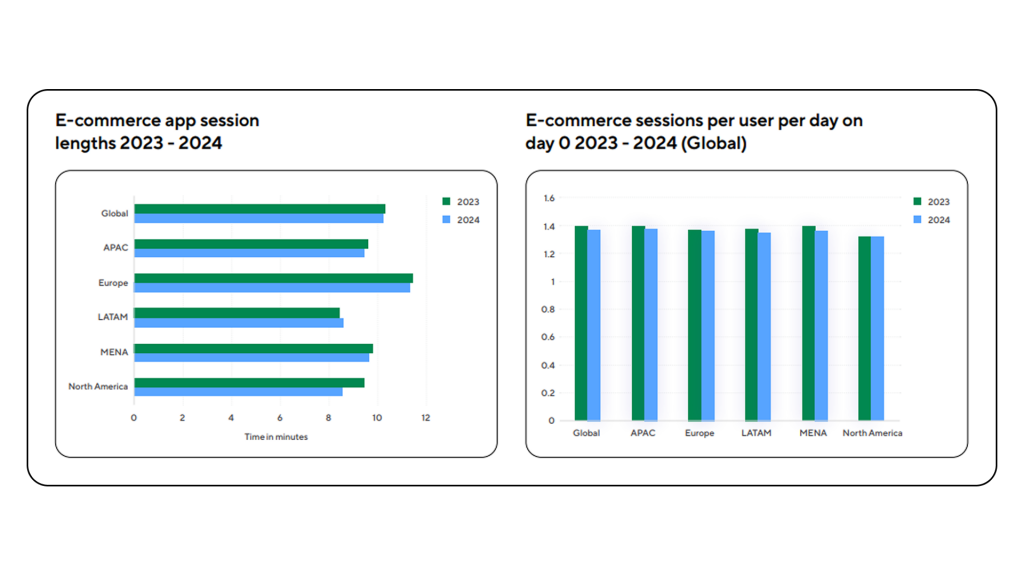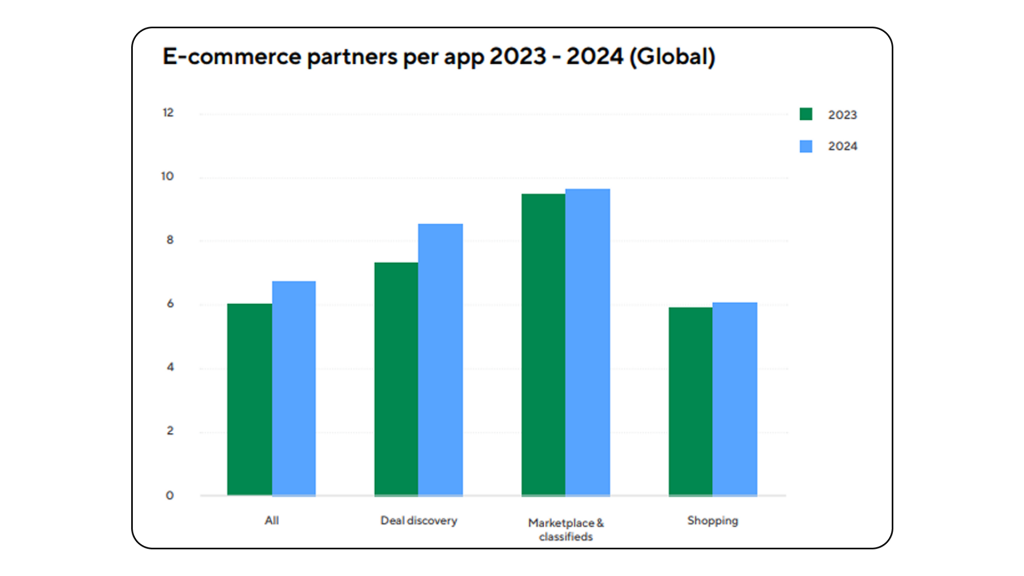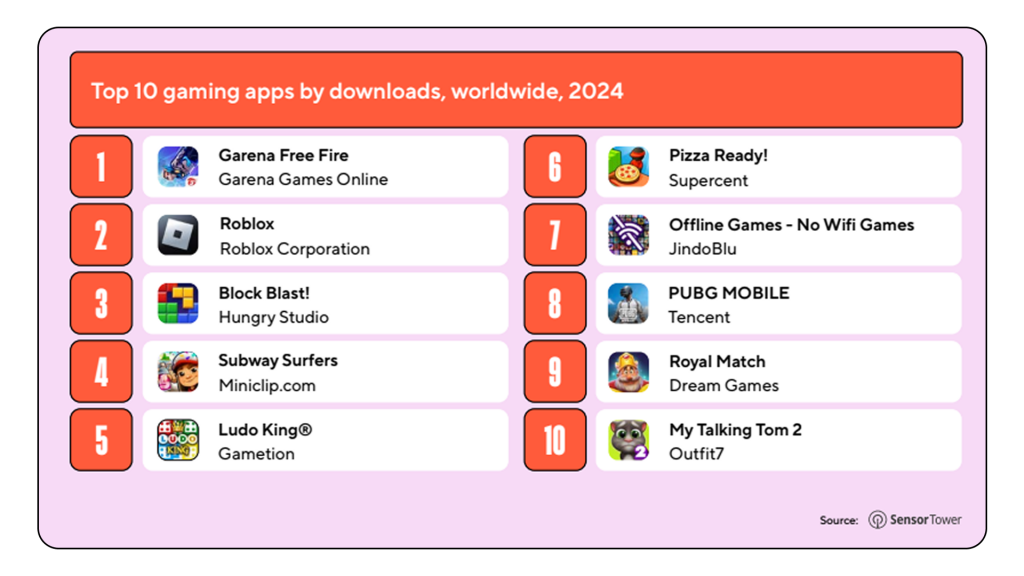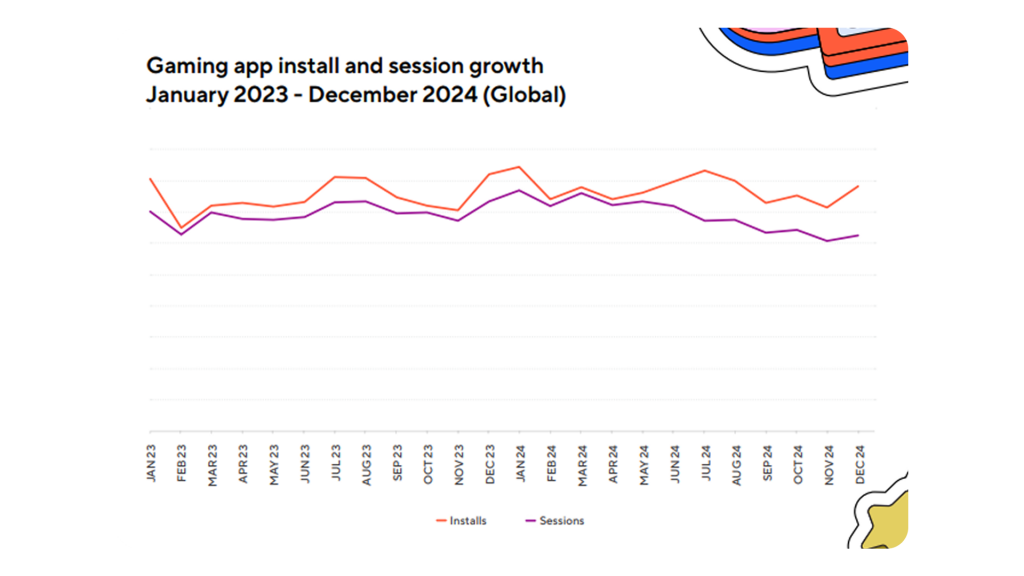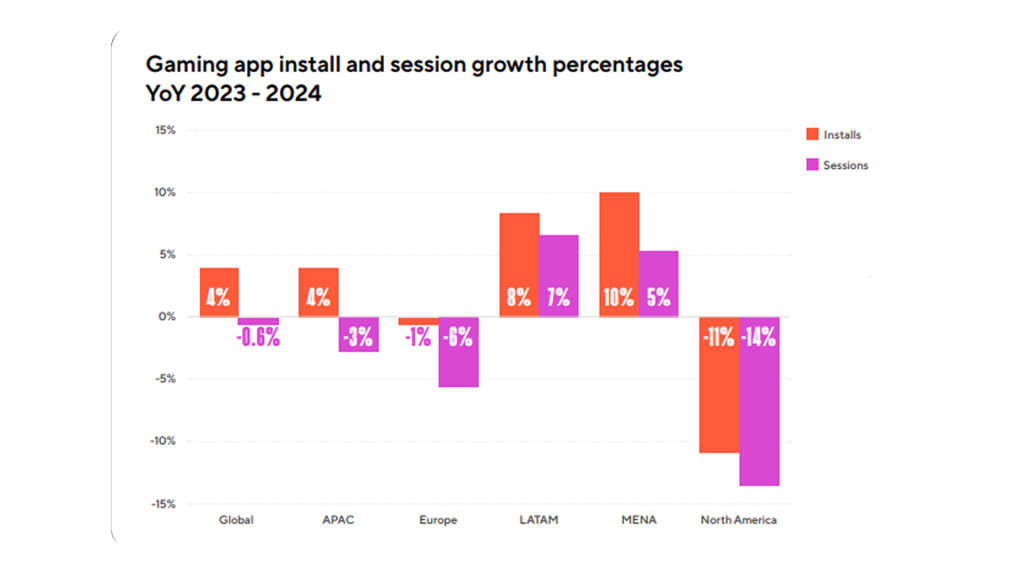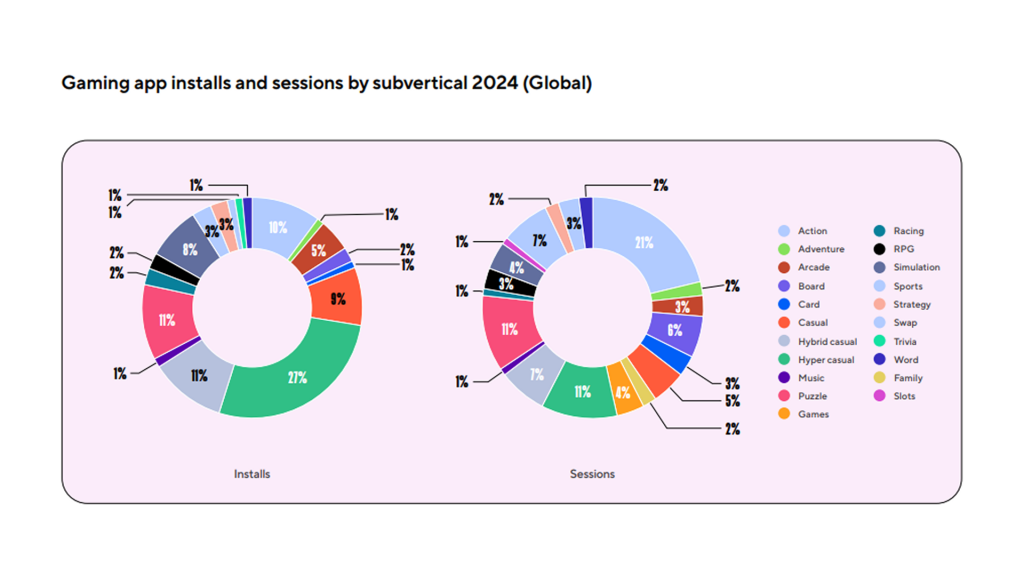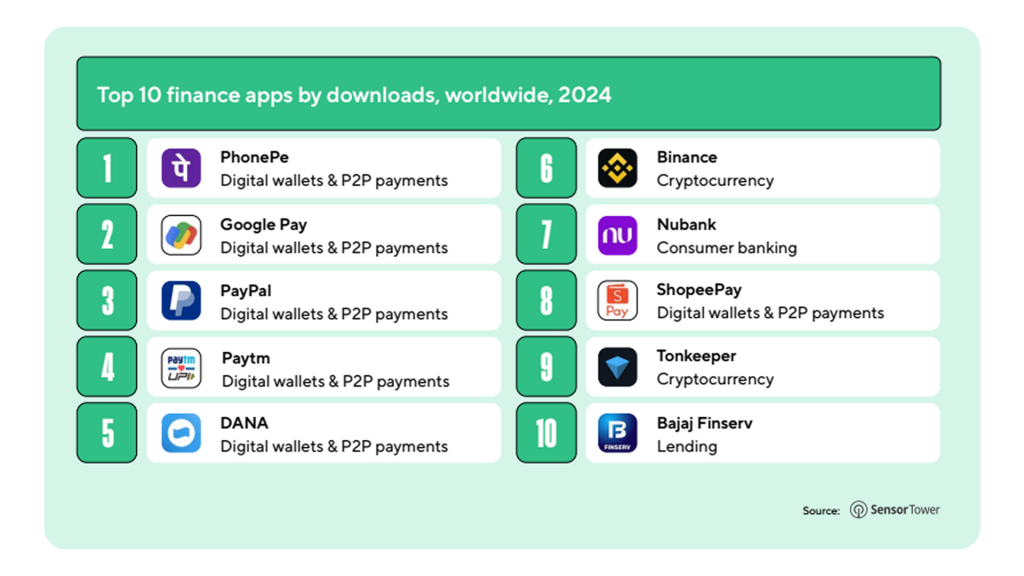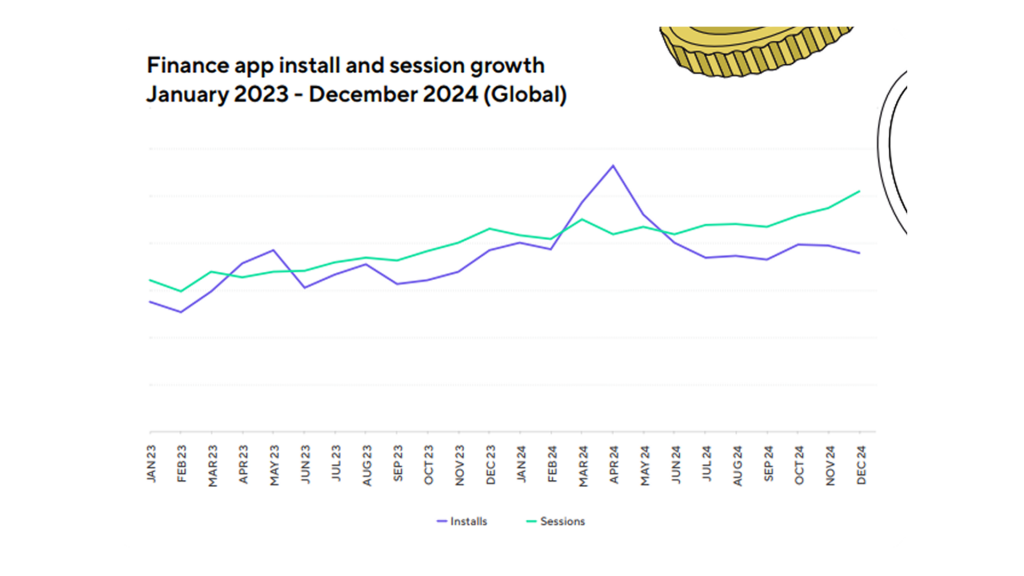Mobile App Market Trends: Insights from Adjust
The mobile app market trends are changing in 2025. The segment is expanding rapidly — and the numbers speak for themselves. Global consumer spending on mobile apps grew by 15.7% year-over-year.
The rise of the industry is also evident in the growing popularity of in-app advertising. In the United States alone, mobile ad spend is projected to reach $228.11 billion in 2025 — accounting for 66.4% of total digital ad investments.
To make the most of today’s performance channels, marketers and businesses need a clear understanding of trends within the mobile app market. This article explores opportunities for gaming, e-commerce, and fintech apps, as highlighted in the Adjust and AppLovin report.
What Drives the Mobile App Market Trends?
The Importance of User Retention
Global app installs increased by 11% in 2024 compared to the previous year. February saw the lowest install volume (–10%), while December was 7% above average.
These fluctuations highlight the importance of balancing user acquisition with long-term retention and engagement strategies.
In e-commerce, app installs peak during sales seasons and holidays — but without effective retention mechanisms like personalized push notifications, special offers, or loyalty programs, users tend to churn quickly.
In gaming, user engagement is driven by regular content updates, in-app events, and interactive challenges.
Privacy Regulations as a Growth Driver
According to NielsenIQ, privacy regulations are increasingly seen not as an obstacle but as a lever for unlocking data potential and building user trust — a critical shift for the mobile app market trends.
Data protection laws are reshaping apps globally, and the use of AI has become essential to collect clean, compliant data.
On iOS, App Tracking Transparency (ATT) opt-in rates are rising — from 32% to 35% globally by early 2025.
Entertainment apps saw opt-in growth from 27% to 33%, while travel apps increased from 25% to 32%.
As users better understand how their data is used, developers should improve consent requests — clearly communicating the benefits of allowing tracking.
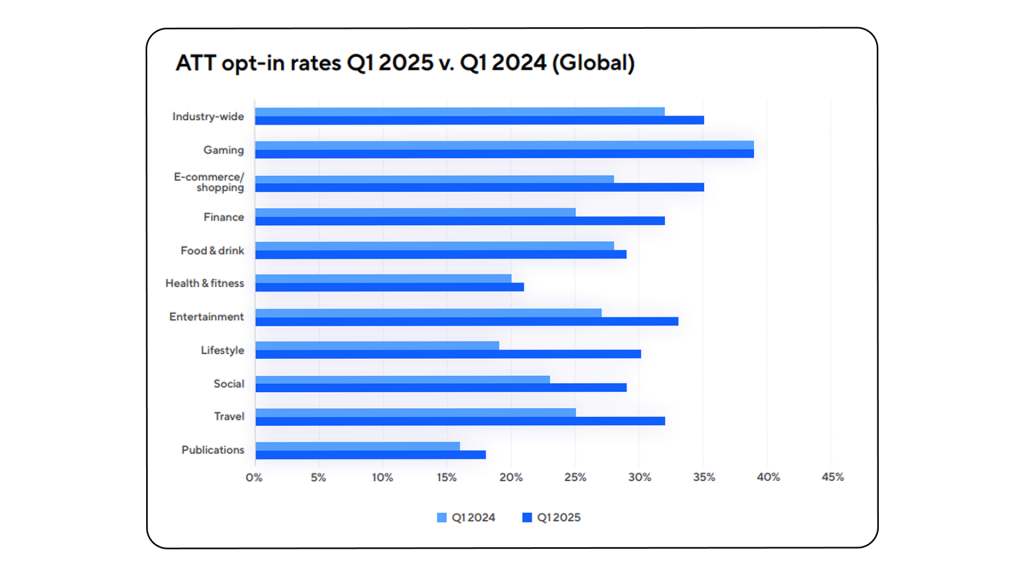
In-App Advertising in E-Commerce
Within the mobile app market trends in 2025, e-commerce is seeing increased investment in mobile-first marketing — especially in-app advertising. As user preference shifts toward apps, retailers are leveraging them to broaden reach and maintain engagement throughout the day.
Previously, social media was the main channel for direct-to-consumer (DTC) brands. Now, with rising competition, marketers are turning to new growth channels — and they’re finding them within the mobile app market.
In-app advertising is a relatively new tool in e-commerce, but AppLovin notes that retailers are already recognizing its value. Mobile ads allow scalable campaigns with measurable ROI.
AI is a key enabler here, driving better efficiency in ad spend, targeting, and performance through conversion-based optimization.
Growth of the Ultra-Casual Gaming Segment
Ultra-casual games are opening new opportunities in the mobile app market for advertisers. Simple mechanics and mass appeal allow for high install volumes and rapid user engagement.
Their low production complexity means frequent launches, and monetization is largely ad-based through high in-app ad volumes.
Mobile Shopping App Trends
Mobile commerce already accounts for 73% of global e-commerce sales.
By 2025, mobile commerce revenue is forecasted to reach $2.5 trillion — a 21.3% increase year-over-year.
E-commerce app installs grew by 17% in 2024, with the Middle East and North Africa (MENA) region showing the highest growth (+55%). North America experienced the sharpest decline.
Average session duration in e-commerce apps fell slightly — from 10.3 minutes in 2023 to 10.23 minutes in 2024. Europe led in session length at 11.33 minutes.
Shorter session times can be interpreted positively: users are finding products faster, completing orders more efficiently.
In 2024, e-commerce apps expanded their partnerships with ad networks. The fastest growth came from deal-finding apps, while marketplaces and classified services remained partnership leaders.
Gaming App Performance in the Mobile App Market
Key projections:
- Mobile gaming revenue is expected to reach $126.1 billion in 2025.
- The global number of mobile gamers is forecasted to grow by 8%, reaching 1.9 billion users.
Mobile games generated 49% of the gaming industry’s global revenue last year. Notably, 13 of the top 15 highest-grossing new mobile games in 2024 were developed by Asian companies.
Globally, installs of gaming apps rose 4% in 2024, while sessions dropped slightly by 0.6%.
The strongest growth in gaming apps came from Latin America and MENA, while North America showed the most significant decline.
In 2024, hyper-casual games led all gaming categories with 27% of installs and 11% of sessions. Puzzle games followed closely with 11% in both metrics.
Simulators (8% of installs) and sports games (7% of sessions) also remained highly popular.
Fintech Apps and Mobile Banking: The Next Phase
Key forecasts:
- Digital wallets are expected to account for over 50% of e-commerce transactions by 2025.
- Global “Buy Now, Pay Later” (BNPL) transaction volume will reach $687 billion by 2028.
- Mobile banking users worldwide will exceed 3.6 billion in 2025.
User activity in crypto apps continues to track with Bitcoin price trends. Binance and Coinbase remain the most-used platforms.
Fintech app installs grew 27% in 2024, while sessions increased by 24%.
Performance by segment:
- Banking apps: +33% installs, +19% sessions
- Crypto apps: +45% sessions
- Payment apps: +29% sessions
- Stock trading apps: +12% installs, +20% sessions
Insights from the Adjust Mobile App Market Report
The following trends are shaping the mobile app market in 2025:
- Cross-platform products will continue to grow. At the same time, mobile web remains key to enabling a seamless transition between browsers and native apps.
- E-commerce will fully embrace in-app advertising as a core performance channel.
- Shopping will become increasingly democratized. DTC brands will keep growing, powered by tools that simplify product discovery and purchasing.
- In-app advertising will become essential for standing out in a saturated market.
- AI and machine learning integration into business processes will be a critical success factor in the mobile app market.
Keep up with mobile app market trends — and bring in-app advertising into your strategy!
For over 10 years, BYYD has supported companies with advanced mobile advertising tools and continues to innovate for the future. Explore our case studies and contact us to launch your in-app campaign.
Found this helpful? Share it with your friends and colleagues!
For consultations and partnership inquiries:
- Submit a request on our website
- Email us at hello@byyd.me
